บำรุงชาติสาสนายาไทย (บ้านหมอหวาน)
บำรุงชาติสาสนายาไทย (บ้านหมอหวาน)
ที่ตั้ง เลขที่ 9 ซอยเทศา ถนนบำรุงเมือง แขวงวัดราชบพิธ เขตพระนคร กรุงเทพมหานคร
สถาปนิก/ผู้ออกแบบ ไม่ปรากฏหลักฐานชื่อผู้ออกแบบ
สถาปนิกผู้บูรณะ : พ.ศ. 2546 – 2548 นายบุญเสริม เปรมธาดา พ.ศ. 2548 – ปัจจุบัน นายเอกรินทร์ สุขสว่าง
ผู้ครอบครอง นางสาวออระ วรโภค และนางออม ญาโณทัย
ปีที่สร้าง พ.ศ. 2467
ประวัติ
บำรุงชาติสาสนายาไทย หรือ บ้านหมอหวาน ตั้งอยู่บนถนนบำรุงเมืองใกล้สี่แยกเสาชิงช้า เจ้าของเดิม คือ หมอหวาน รอดม่วง แพทย์แผนไทยผู้มีชีวิตอยู่ในช่วงสมัยรัชกาลที่ 5 – รัชกาลที่ 8 หมอหวานเป็นแพทย์ผู้เคยถวายการรักษาสมเด็จพระเจ้าบรมวงศ์เธอกรมพระยาเทวะวงศ์วโรปการ อัครมหาเสนาบดี ในรัชกาลที่ 6 ต่อมาในปี พ.ศ. 2466 พระราชบัญญัติการแพทย์ ฉบับแรกของสยามประเทศได้ถูกประกาศขึ้นท่ามกลางกระแสความนิยมการแพทย์แผนตะวันตกที่เชียวกราก แม้พระราชบัญญัติฉบับนี้จะมีจุดประสงค์เพื่อยกระดับมาตรฐานการแพทย์ของไทยให้เท่าเทียมอารยประเทศ แต่กลับส่งผลกระทบอันใหญ่หลวง ทำให้การแพทย์แผนไทยต้องหยุดนิ่งและแพทย์แผนไทยจำนวนมากต้องเลิกอาชีพ หลังจากที่พระราชบัญญัติฯ ฉบับนี้ประกาศใช้เพียง 1 ปี หมอหวานได้สร้างบำรุงชาติสาสนายาไทยขึ้น เพื่อประกาศเจตนารมณ์อันแน่วแน่ที่จะผดุงวิชาชีพแพทย์แผนไทยให้ดำรงอยู่ต่อไป ต่อมาในปี พ.ศ. 2488 หมอหวานได้สิ้นชีวิตลง อาคารบำรุงชาติสาสนายาไทย และกิจการปรุงยาของหมอหวานจึงกลายเป็นมรดกตกทอดที่สืบต่อกันมาภายในครอบครัวจนถึงปัจจุบัน
บำรุงชาติสาสนายาไทยมีรูปแบบทางสถาปัตยกรรมแบบตะวันตก พื้นที่ใช้สอยแบ่งเป็น 2 ส่วน คือ ส่วนสำนักงานและสถานจำหน่ายยาเป็นอาคารกึ่งปูนกึ่งไม้ และส่วนพักอาศัยเป็นอาคารไม้ทั้งหลัง ตัวอาคารทาสีชมพูอ่อนตัดด้วยสีเขียวใบบัวของประตูเฟี้ยมบานลูกฟัก หน้าต่างเป็นบานเกล็ดไม้ หน้าบันส่วนมุขหน้าของอาคารประดับด้วยลายปูนปั้นรูปดอกบัวล้อมรอบป้ายไม้แกะสลักชื่อ “บำรุงชาติสาสนายาไทย” และตัวอักษรปูนปั้นระบุปีที่สร้าง “พระพุทธศักราช ๒๔๖๗” ถัดลงมาเป็นป้ายไม้แกะสลักตราสัญลักษณ์ “หมอหวาน” โดยมีรูปแบบอันแสดงถึงการได้รับอิทธิพลจากตราสินค้าของประเทศตะวันตก ตัวอาคารได้รับการออกแบบให้เป็นทั้งร้านขายยา สถานที่ปรุงยา และสถานรักษาคนไข้ของหมอหวาน มีรูปแบบทัดเทียมกับร้านขายยาของประเทศในทวีปยุโรป บานประตูไม้ประดับกระจกสีน้ำเงิน แกะสลักบานเป็นภาพหม้อยาไทยและสัญลักษณ์ตราเฉลว อันเป็นสัญลักษณ์ของแพทย์แผนไทย ผนังด้านหน้าชั้นล่างของอาคารทั้งหมดทำเป็นตู้โชว์เพื่อจัดแสดงขวดยาตำรับต่างๆของหมอหวาน โดยส่วนใหญ่ เป็นขวดที่นำเข้าจากต่างประเทศ ชั้นล่างเป็นร้านขายยาและสถานที่รักษาคนไข้ ส่วนชั้นสองเป็นห้องเก็บเครื่องยา โดยมีระเบียงดาดฟ้าขนาดใหญ่ เพื่อใช้ตากยา และยังมีดาดฟ้าบนชั้น 3 เหนือห้องเก็บยา เป็นที่ตากยาอีกด้วย
บำรุงชาติสาสนายาไทย ได้รับการดูแลอย่างดีจากทายาทของหมอหวานสืบเนื่องกันมาจนถึงปัจจุบัน เช่นเดียวกับกิจการปรุงยาและจำหน่ายยาไทยที่ยังคงได้รับการสืบทอดเพื่อรักษาปณิธานอันแรงกล้าของหมอหวานให้ดำรงอยู่ต่อไป ถือเป็นการรักษามรดกทางวัฒนธรรมที่มีคุณค่าของประเทศได้อย่างน่าชื่นชม

ร้านขายยาหมอหวาน

ร้านขายยาหมอหวาน

ร้านขายยาหมอหวาน
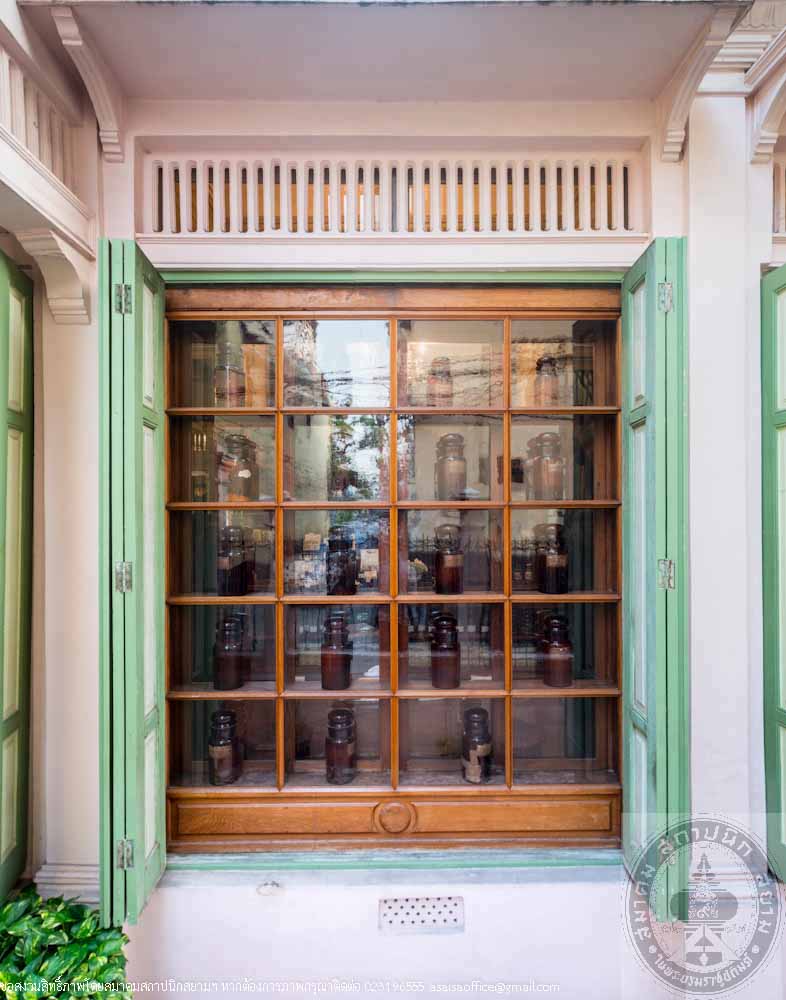
ร้านขายยาหมอหวาน

ร้านขายยาหมอหวาน

ร้านขายยาหมอหวาน
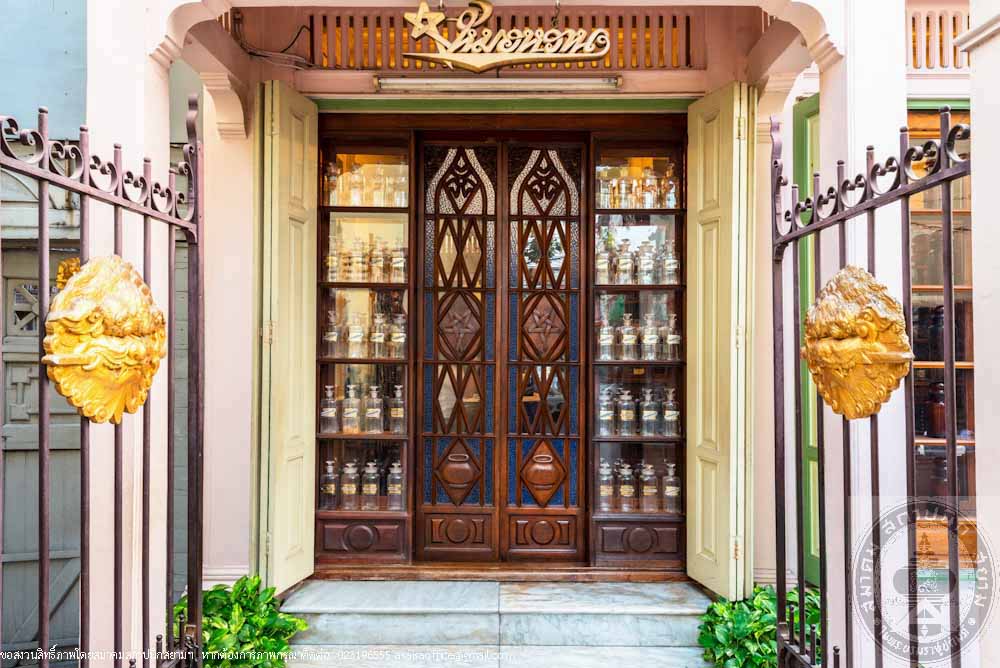
ร้านขายยาหมอหวาน
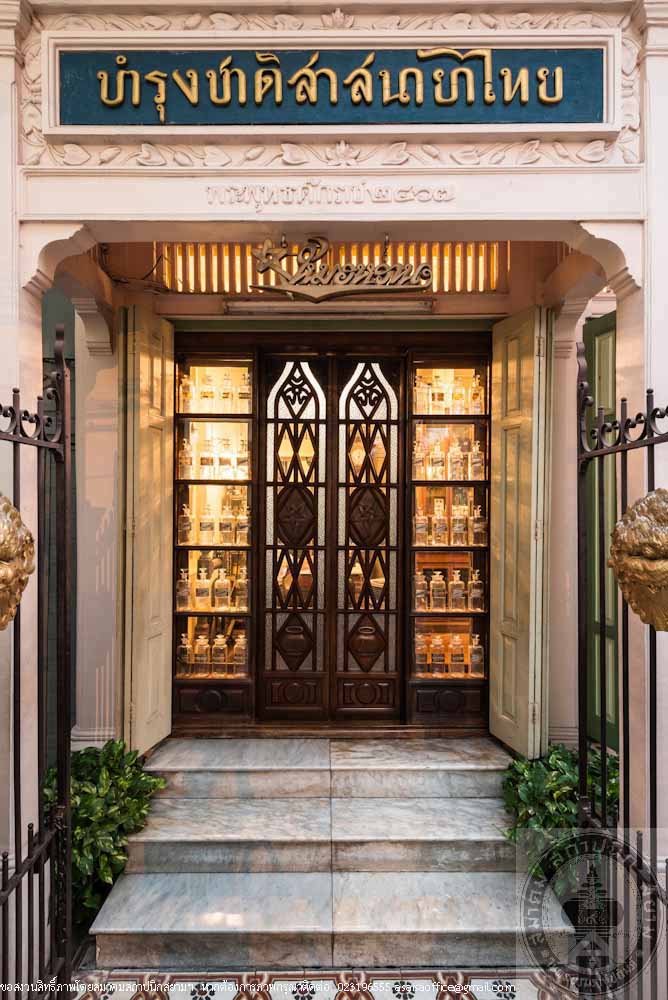
ร้านขายยาหมอหวาน
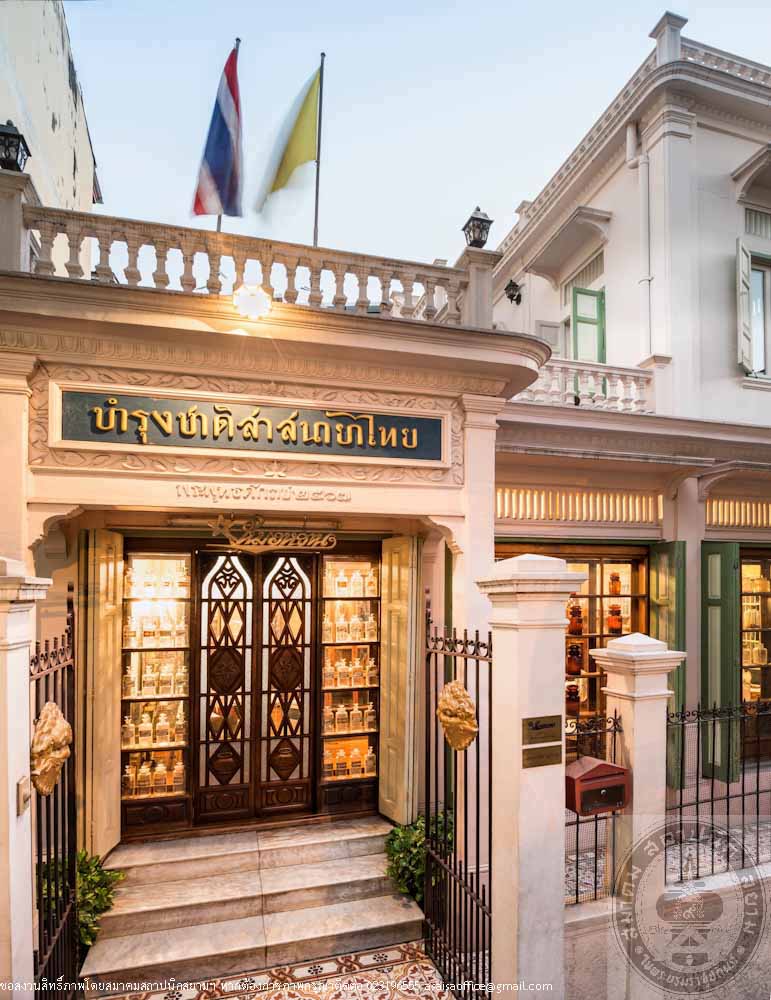
ร้านขายยาหมอหวาน

ร้านขายยาหมอหวาน

ร้านขายยาหมอหวาน
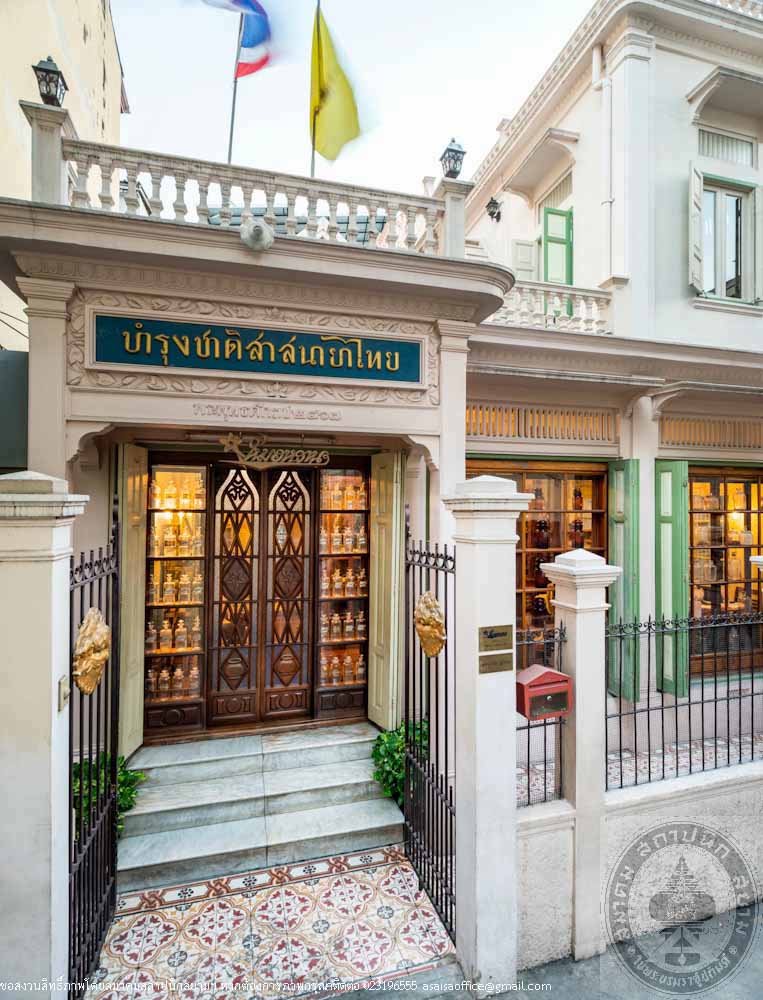
ร้านขายยาหมอหวาน

ร้านขายยาหมอหวาน

ร้านขายยาหมอหวาน
-

ร้านขายยาหมอหวาน
-

ร้านขายยาหมอหวาน
-

ร้านขายยาหมอหวาน
-

ร้านขายยาหมอหวาน
-

ร้านขายยาหมอหวาน
-

ร้านขายยาหมอหวาน
-

ร้านขายยาหมอหวาน
-

ร้านขายยาหมอหวาน
-

ร้านขายยาหมอหวาน
-

ร้านขายยาหมอหวาน
-

ร้านขายยาหมอหวาน
-

ร้านขายยาหมอหวาน
-

ร้านขายยาหมอหวาน
-

ร้านขายยาหมอหวาน
Bumrungchat Sassana Yathai (Ban Mo Waan)
Location 9 Soi Thesa, Bamrungmuang Road, Wat Ratchabopit, Phra Nakorn, Bangkok
Architect Unknown
Designer Restoration architect: 2003 – 2005 Bunserm Premthada 2005 – present Ekarin Suksawang
Owner AUnknownura Worapoke and Aom Yanothai
Year Built 1924
History
Bumrungchat Sassana Yathai or Ban Mo Waan is located on Bamrungmuang Road near Sao Ching Cha Intersection. Its original owner, Mo Waan Rodmuang, a Thai Traditional Doctor who lived between the period of King Rama V and King Rama VIII. Mo Waan was a doctor who provided medical care to Prince Devavongse Varopakarn during the reign of King Rama VI. In 1923, Siam’s first Medical Acts was enacted among turbulent trends of Western medicines. Even thought the purpose of the Acts was to improve the standard of Thai’s medicine to be on the same level with those of the civilized countries. However, the Acts caused a large impact on Thai traditional medicine which later came to a standstill and a lot of Thai Traditional doctors had to give up practicing. One year after the Acts was enacted, Mo Waan founded Bumrungchat Sassana Yathai to proclaim his intent to sustain Thai Traditional Medicine professions. Mo Waan passed away in 1945. Bumrungchat Sassana Yathai and his medicine business have been inherited by members of his family until these days.
Bumrungchat Sassana Yathai possesses a design of Western architecture. The building’s usable area was divided into two parts, i.e. the office and pharmacy area are in the half concrete half wood building while the living units are wood building. The light pink exterior paint creates contrast with the leafy green Look Fak patterned accordion doors. Wood window shutters. The front porch pediment is decorated with lotus stucco encircling a wood carving sign of “Bumrungchat Sassana Yathai” as well as wordings stucco specifying the year it was built, “Buddhist Era 2467.” Underneath was another wood carving signage of “Mo Waan” emblem that revealed the influence of the Western use of trademarks. The building was designed to house a pharmacy, medicine compounding area and Mo Waan’s clinic similar to pharmacy practice in European countries. Wooden doors carved into a pot used in boiling medicine and Chalew, a symbol for Thai traditional medicine. Ground floor front enclosures are fitted with window display showcasing bottles of Mo Waan’s medicines. Most of the bottles were imported. Pharmacy and clinic are on the ground floor while the second floor is used for medicine storage. Large roof-decks used in drying medicine in the sun.
Bumrungchat Sassana Yathai’s shop has been continuously maintained by Mo Waan’s heirs to present. The Thai traditional medicine business has also been carried on and Mo Waan’s passionate determination remains. Another praiseworthy preservation of Thailand’s cultural heritage.